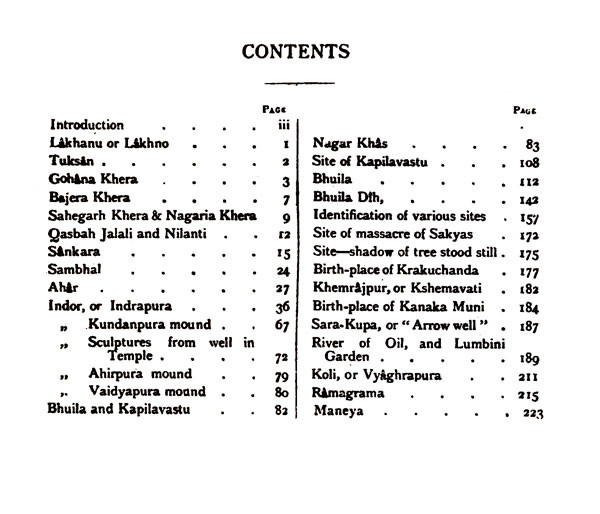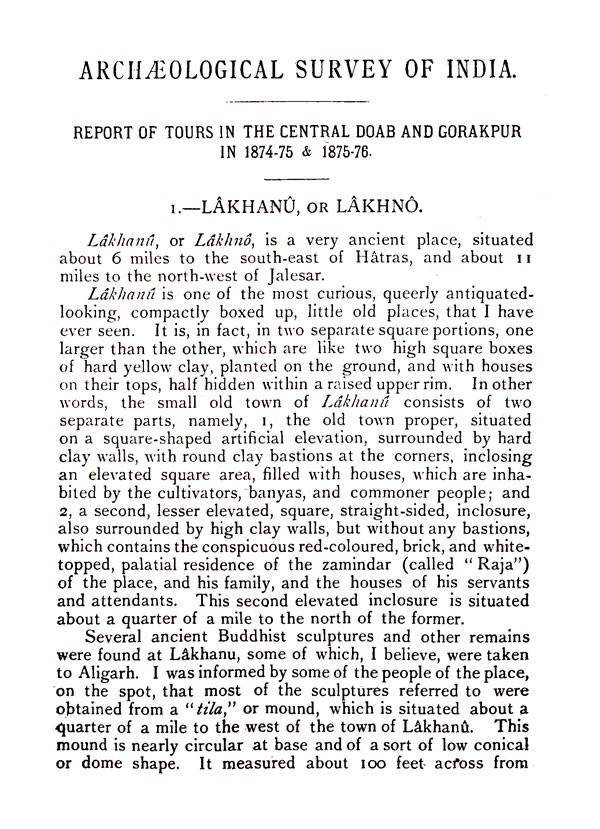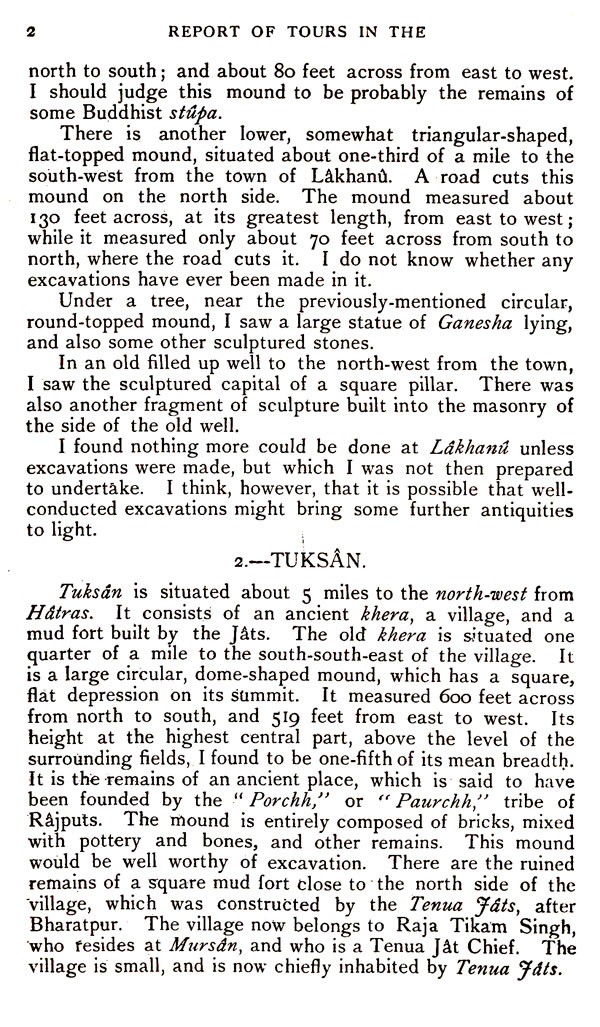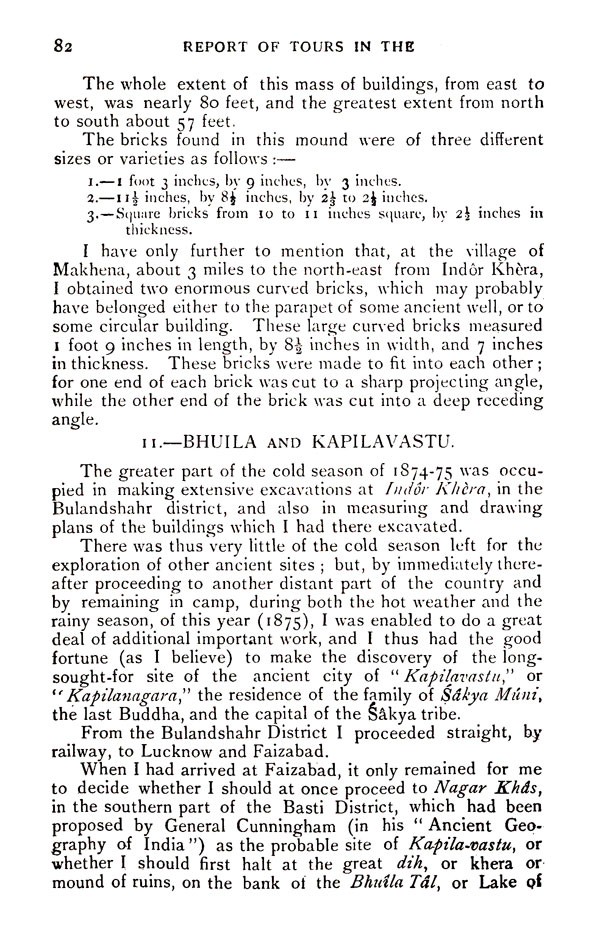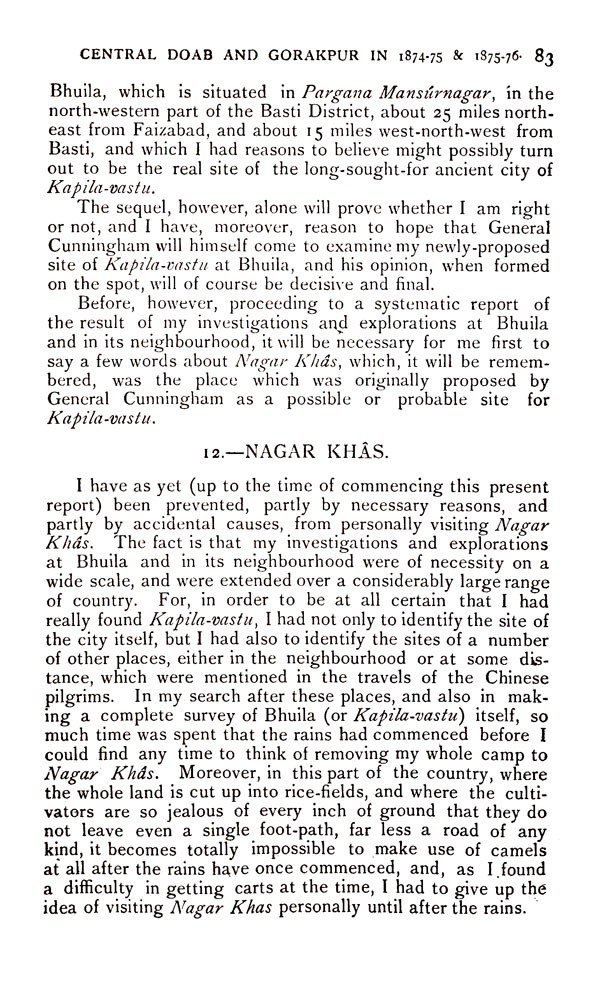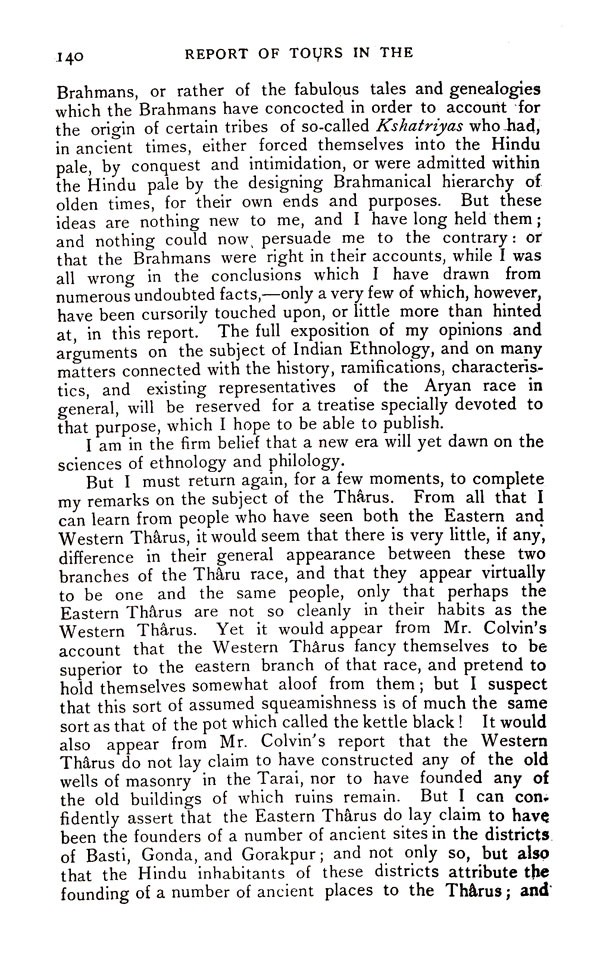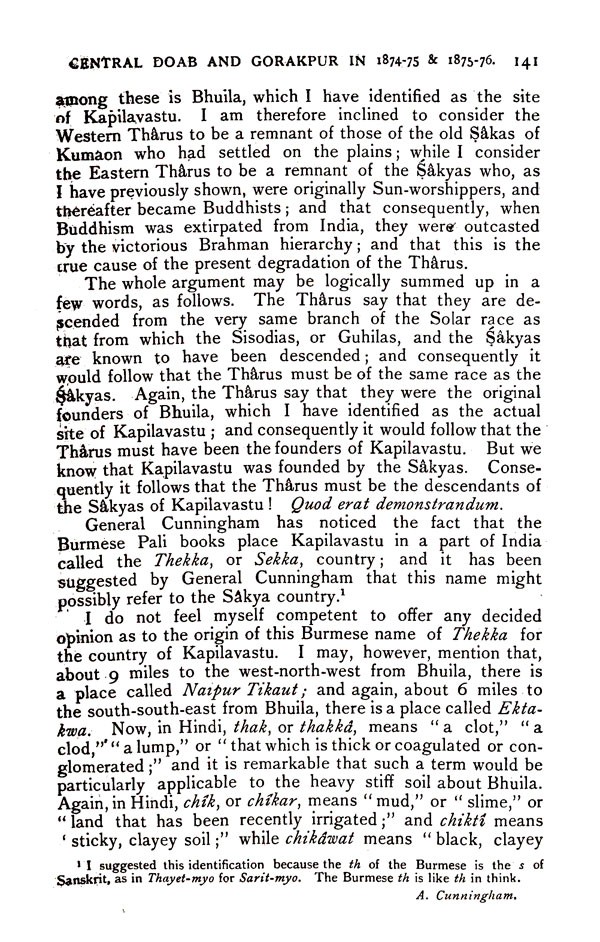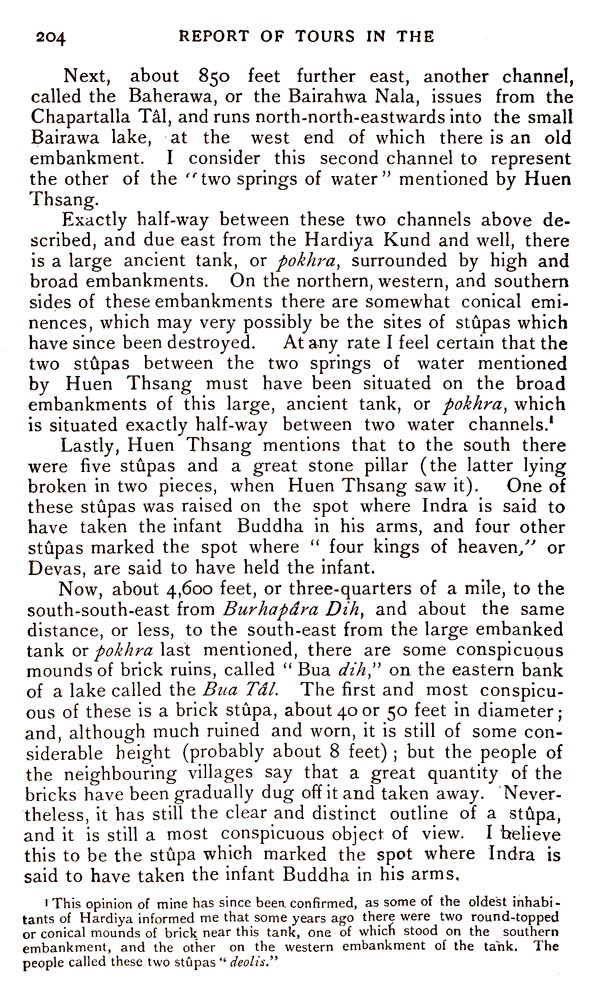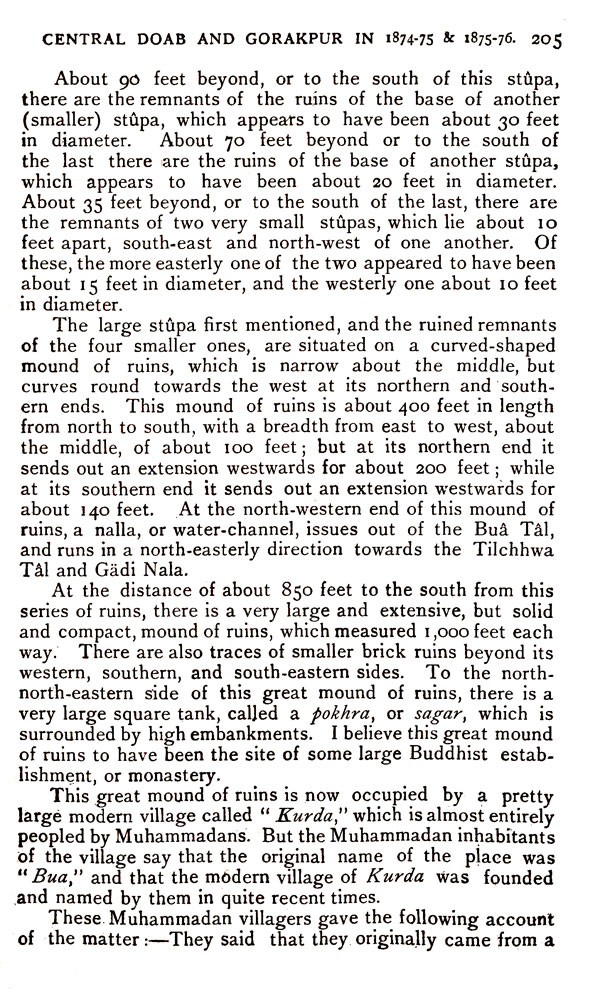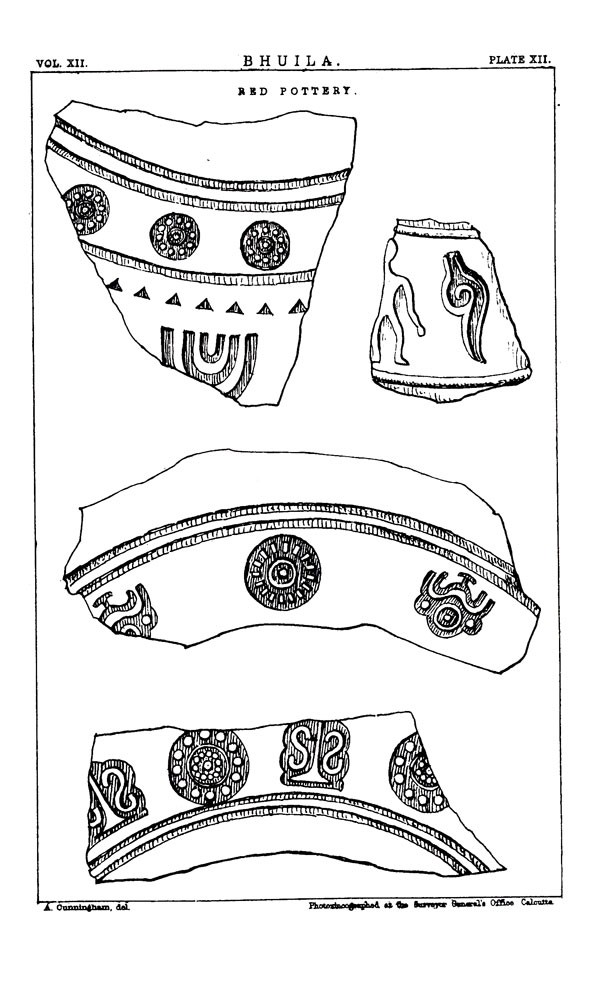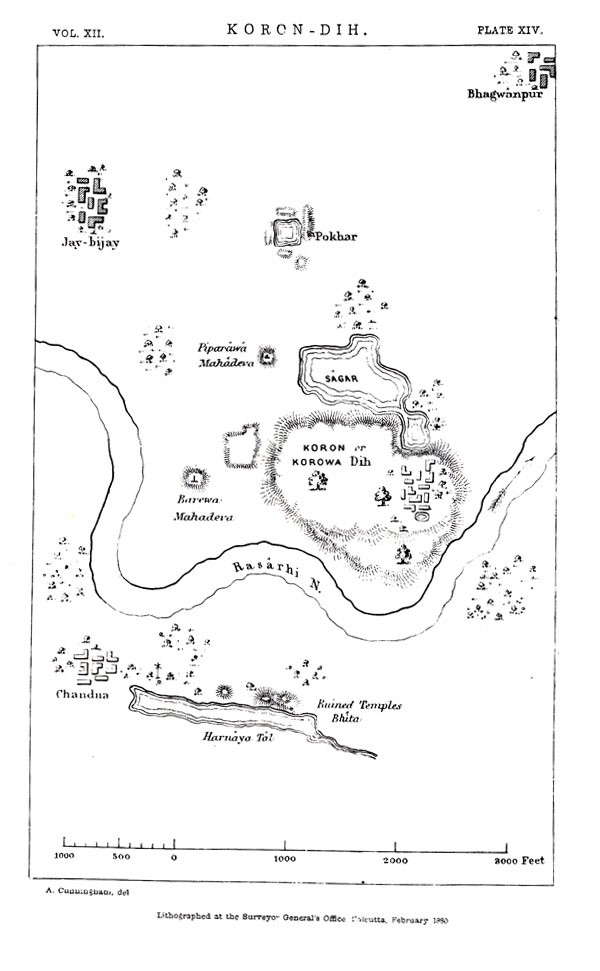
ASI Report of Tours in the Central Doab and Gorakhpur in 1874- 75 and 1875- 76 (Volume XII)
Book Specification
| Item Code: | AZB520 |
| Author: | A. C. L. Carlleyle |
| Publisher: | Archaeological Survey of India |
| Language: | English |
| Edition: | 2000 |
| Pages: | 272 (Throughout B/W Illustrations) |
| Cover: | HARDCOVER |
| Other Details | 9.8 x 6.5 inches |
| Weight | 682 gm |
Book Description
IN the present volume Mr. Carlleyle has described the results of two years' tours in the central portion of the Gan. getic Doab, and in the Gorakhpur district. in both of which he made some important and very interesting discoveries. In the Doab he examined the great mound of Indor Khera, 8 miles to the south-south-west of Anupshahr on the Ganges, where he found a copper-plate inscription of the great King Skanda Gupta, dated in the year 146 of the Gupta era. He was fortunate also in discovering the curious old fort of Sankara on the Budh Ganga, and other places in the same neighbourhood, which seem to be well worth excavation.
But Mr. Carlleyle's most valuable work was the discovery of the site of the famous town of Kapilavastu, the birth-place of Sakya Buddha, which was for many centuries the most venerated of all the holy places of Buddhism. At the present day it is only an insignificant village, but its lake is still there, as well as the little river Rowai or Rohini, and numerous old sites, some of whose names still remain unchanged, to attest the correctness of the identification of the old city. Of these the most prominent are the Sar-kuïa, or “ Arrow well," and the Hathi-gadhe or “ Elephant Pit." The former is the Sara. kupa of Sanskrit, or the “ Arrow spring," which marks the spot where Prince Siddhartha's arrows fell, when he was con. tending in archery with his kinsmen and the neighbouring Princes. The latter is the Hasti-gartta of Sanskrit, or the "Elephant Hole," where the elephant, which was killed by Devadatta to obstruct the road into the city, was pitched by Prince Siddhartha.
Both of these spots are mentioned by the Chinese pilgrim Hwen Thsang under the same names, Sara-kupa (Source de la Fleche) and Hasti-gartta [la Fosse de l'Elephant], which have remained unchanged to the present day.
Shortly after Mr. Carlleyle's discovery I visited Bhuila Tål myself, and examined many of the localities mentioned in this Report. I saw the Sur-kuža, or “ Arrow well,” the Háthi-gadhe, or “ Elephant Pit;" the Lumbini-garden where Prince Siddhartha was born, and the site of Koli, the birthplace of Måyå Devi, the Prince's mother. I also paid a visit to Koron-dih, the supposed site of Råma-grama, and to other places in the neighbourhood. The result of my examination was the most perfect conviction of the accuracy of Mr. Carlleyle's identification of Bhuila Tâl with the site of Kapilavastu, the famous birth-place of Sâkya Muni.
**Contents and Sample Pages**
